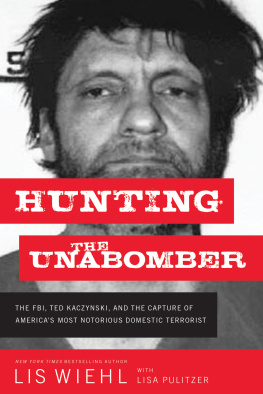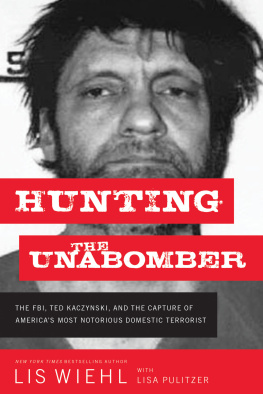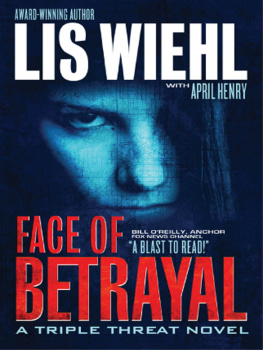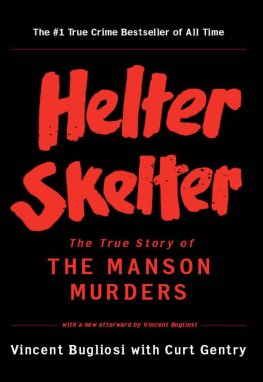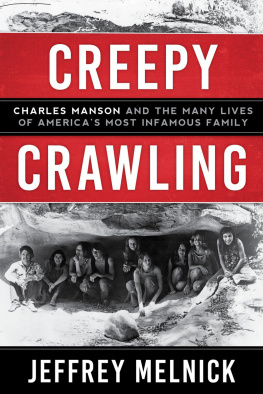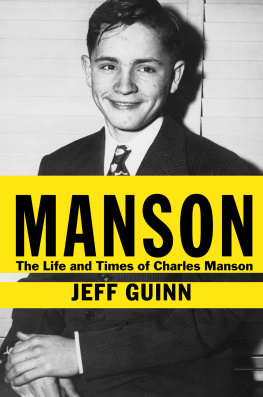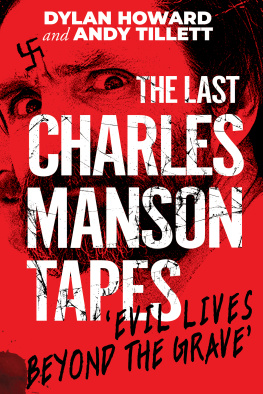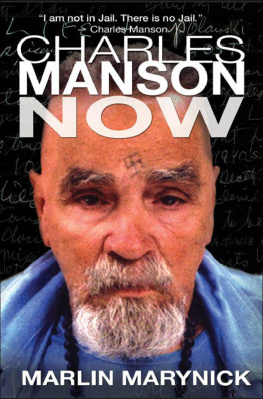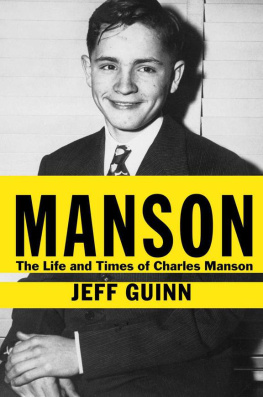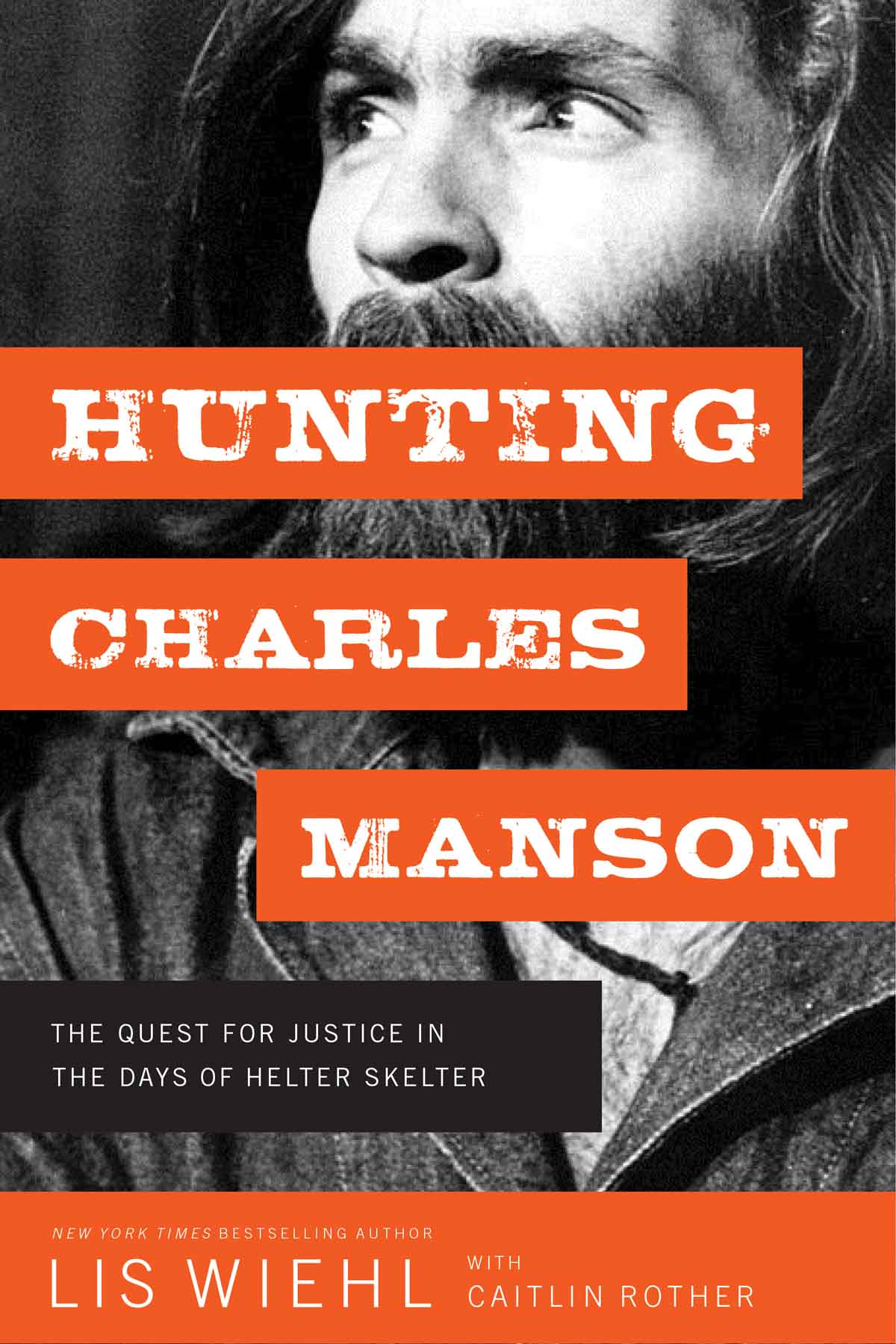CONTENTS
Guide
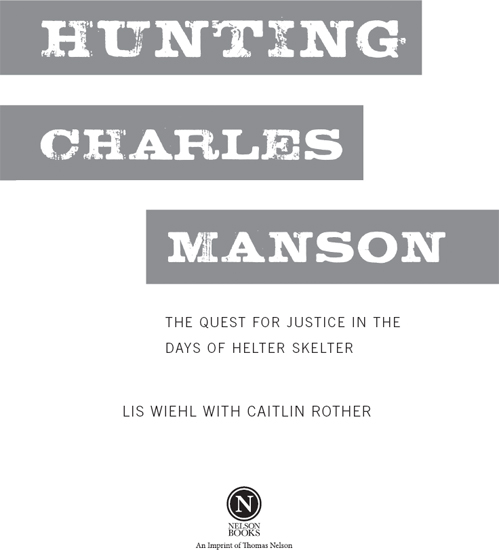
PRAISE FOR HUNTING CHARLES MANSON
Hunting Charles Manson is the best true crime book you will ever read. No one could tell this story betterfrom its very beginnings to the riveting endthan Lis Wiehl: former prosecutor, legal commentator, and bestselling crime novelist. Fact is so much stranger than fiction, and Mansons dark and deadly life is proof of that. Lock your doors, keep the night lights on, and read this book.
LINDA FAIRSTEIN, New York Times bestselling crime novelist and former prosecutor
Lis Wiehl is a pro who does her homework and knows what shes talking about. Shes a storyteller extraordinaire and this one, though nonfiction, reads like a thriller. She gives voice and life to a troubling aspect of our history, one that is definitely worth remembering.
STEVE BERRY, New York Times bestselling author
You think you know everything about an infamous criminal case until brilliant writers and researchers like Lis Wiehl and Caitlin Rother come along to expose new layers and new insights. This is a must-read for true crime fansand those who think they know everything about the Manson case.
GREGG OLSEN, #1 New York Times bestselling author
Lis Wiehls real-life page-turner is jam-packed with new, fascinating, thoroughly researched, and relevant-today details about the making of a monster, the evolution of his dangerous charisma, and how he was finally brought to justice.
KATE WHITE, New York Times bestselling author
I n taking on the quest for justice in the tragedy that was the summer of 1969, I thought about what made Charlie Manson do what he did.
Those killings changed American culture. People who didnt have home alarms quickly bought as fancy a system as they could afford. Mothers began walking their children to school. And parents and children alike had trouble falling asleep at night. Charlie Manson and his children robbed America of its innocence.
Nearly fifty years later, Charles Tex Watson, the man who carried out Mansons murderous plans, was asked by a parole board commissioner, What made a God-fearing, churchgoing young man from Texas move to California and commit the worst killings this state has ever seen? The commissioners question was asked in a thunderous tone. He was met with silence from the prisoner and straight-on stares from family members of the victims. I could understand the silence. What answer could there be?
As the only reporter allowed in that parole hearing in California, I brought into the room fifteen years of national television crime reporting and, as a former federal prosecutor, hundreds of federal prosecutions. I am proud to be a third-generation federal prosecutor, after my father and grandfather before me. That same grandfather was also a judge, and my father had also served as an FBI agent. I have had a lifetime of law enforcement exposure and experience, and yet I was as bewildered as the parole commissioner by the crimes.
This mystery is part of the reason behind this reexamination of arguably the most notorious crime in American history. How could it have happened? I also wanted to explore the process by which justice was done. The Christian tradition, of which I am a part, has justice at its center, a consequence of the belief that God will ultimately put all things right. We should take seriously the process by which our governments work to see justice accomplished, and this bookas well as subsequent books in this seriesattempts to do just that.
As a result of my legal experience, I knew when embarking on this quest what law enforcement agents on the scene in 1969 would have or should have been looking for, which made my discoveries of what they actually did all the more shocking. I knew what the lead prosecutor, Vincent Bugliosi, was attempting to do with his various motions and strategies, and how successful he was or was not. (Long after the Manson case, I got to know Bugliosi when he asked for assistance in writing a book about the Supreme Court.) And my television crime reporting experience was invaluable as I researched, wrote, and analyzed the defenses case and the various alternative theories about the crime.
Investigative journalist and true crime author Caitlin Rother brought thirty years of research and storytelling experience, as well as a breadth of knowledge about the criminal justice system, addiction, and mental illness. We agreed to approach the known sourcesincluding the criminal case fileswith fresh eyes. But we also set out with the goal of uncovering new details that would enhance readers overall understanding of the case. I believe the book does just that, offering new and illuminating material that will not only surprise but possibly even astonish the reader.
In the end, Im not sure we will ever be able to answer definitively the question of why. But I do believe these pages bring us closer than ever before. Read on.
Today is a good day.
A grizzled old man with a long, bushy beard and a swastika tattoo on his forehead sat waiting in his prison blues for a special visitor one Saturday in late December 2013.
Charles Milles Manson probably received more mail than any other inmate in California, so he turned down or ignored many persistent invitations to correspond or visit with him here at Corcoran State Prison. But this particular visitor won him over somehow.
Afton Elaine Burton was just seventeen when she started to write him. On this Saturday morning seven years later, seventy-nine-year-old Manson was more than three times her age.
Still, theyd formed a bond. Hed always been good at drawing in young women, and it seemed his charms had endured.
Fenced in with curls of spear-tipped barbed wire, Corcoran had been Mansons home for the last thirty years of his most recent forty-five-year term. Surrounded by vast, dusty miles of nothingness and the occasional field of cotton, hay, tomatoes, or wheat, Corcoran is Californias largest correctional facility. A second one down the road treats inmates for substance abuse. Other than the local inmates and corrections employees, however, few people want to live in the middle of nowhere, where the most touted downtown eateries include McDonalds, Taco Bell, Subway, and two pizza parlors.
But Burton didnt seem to mind. She had left her strict Baptist family back in Illinois to move here and had visited Manson regularly ever since. In turn, as hed done many times for the underage girls and troubled women drawn to him over the years, he gave Burton a name in his own image: Star Manson.
When Star arrived for their five-hour visit at Corcorans small Protective Housing Unit (PHU) that Saturday in 2013, the lanky young woman wore a short spring dress with ballet flats. Her dark brown hair was still growing out after shed shaved it to show her support for Manson, just as his female codefendants had done during his first murder trial in 1970.
Some people said she even resembled a couple of Mansons earliest followers, Lynette Squeaky Fromme and Susan Sadie Atkins.
Decked out in his typical prisoner garb of jeans, a white T-shirt under a blue button-up collared shirt, and white tennis shoes, Manson greeted Star in the visiting room with a kiss on the lips. His thumbnails were long and yellow, and his swastika tattoo had long ago replaced the X hed carved into his head during his first trial, when his followers spread his message that I have Xd myself from your world.


